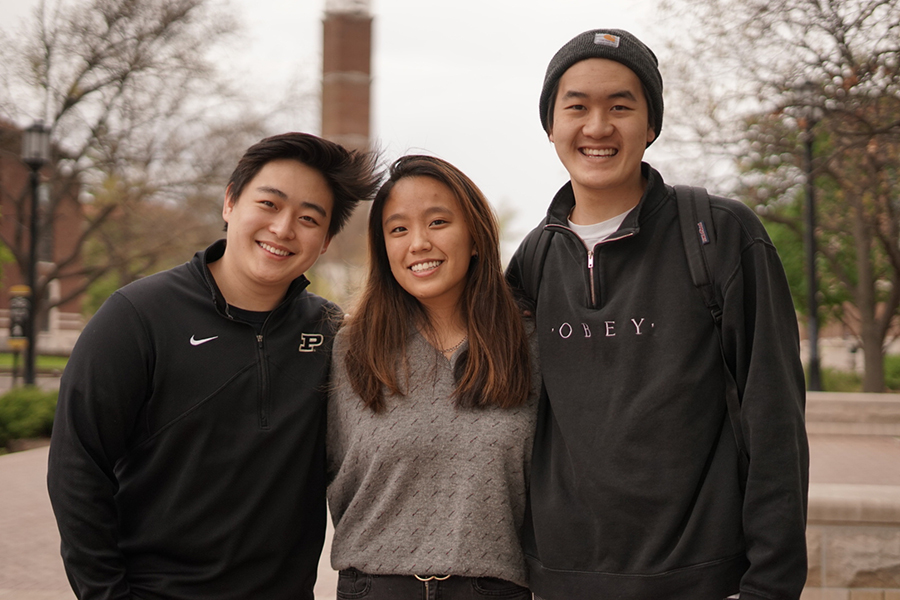Purdue Productivity Pods wins Ideas to Innovation Competition

Providing a “home away from home” to combat mid-day exhaustion for students – that’s the idea behind the winning project in Purdue ECE’s Ideas to Innovation Challenge. The competition is a fun and effective way for aspiring Purdue students to form interdisciplinary teams and propose ideas aimed at solving important societal problems, improving people’s lives, and making the world a better place.
Purdue Productivity Pods is this year’s winning team. James Yao, a junior in Electrical Engineering, Matthew Nugraha, a junior in General Management, and Prisca Huang, a junior in Medical Lab Science, designed Purdue Productivity Pods to “offer a safe and private place for students to either rest or quietly finish academic responsibilities away from the stressful and fast-paced environment of Purdue’s campus.” The pods are set at an ergonomic napping position to optimize rest, and include a rotating privacy screen to add additional privacy that students may need. The pods also feature speakers and noise cancelation technology to give students a variety of options for sound, from complete silence, to music, to ambient noise. A Purdue ECE student-created app allows students to book rest periods ahead of time, or to check availabilities for walk ins.
The Ideas to Innovation competition is organized in two phases. In the first phase, students form teams and propose a novel solution to an important unsolved societal problem in the areas of Health and Wellness, Food and Agriculture, Automation and Robotics, Energy and Environment, or Transportation. ECE technology (device, app, software, etc.) must be a key driver of the proposed solution. The competition’s organizing committee selects the top 20 problem/solution statements. The selected teams will then move to the second phase in which they are required to pitch their idea to a panel of judges for the final selection. The educational purpose of the competition is to simulate the experience of being an engineer entrepreneur.
Vital Sight was the second place team in this year’s competition. Andrew Butler, a senior in ECE, and Damen Wilson, a junior in biomedical engineering, proposed a device that would help EMS workers triage patients during a mass casualty incident (MCI). A pair of glasses placed on a victim would quickly send multiple vital sign measurements, such as consciousness, pupil dilation and core body temperature, to available medical professionals via a Bluetooth network to help identify those who require immediate treatment.
Coming in third place was team Green Dormination, made up of ECE juniors Byeongchan Jeong and YoungJoo Moon. The team proposed providing a more convenient housing experience for college students as well as decreasing unnecessary pollution from electronic waste by developing a platform and app to purchase and resell used home appliances, allow for a short-term appliance rental, and organize the items being handled in a database to determine various options regarding the price. ECE technologies are utilized in both setting up the webpage/application/database and in implementing automatic price algorithms.
The top three teams were selected by a panel of judges and received cash awards with the top prize of (per team) $2,000, runner-up of $1,000 and the third place $500. Other teams qualified for the second round but not among the top three received $250 per team.
